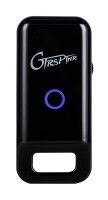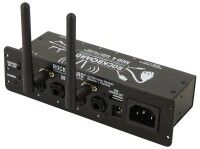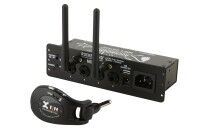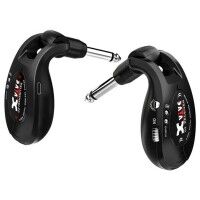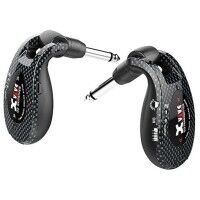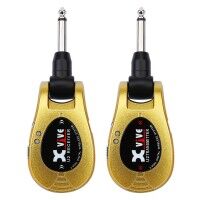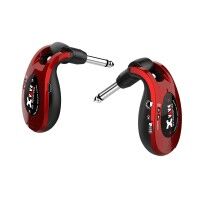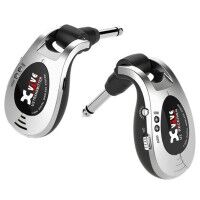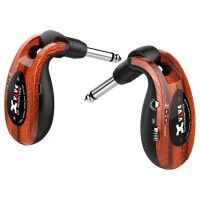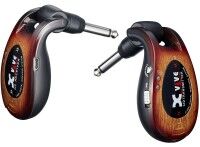


Get a 4 year extended warranty
Wouldn’t it be great, if we doubled the warranty for your product to 4 years? Sounds really good, doesn’t it? All you need to do for this warranty extension is to register your product with us. So, what are you waiting for?
More informationNo cable, so sound
With the advent of electromagnetic pickups on the one hand, and electronic amplifiers on the other, the necessary link became the best-selling accessory, a must-have, so to speak: the instrument cable. Available in different lengths and with a wide variety of coatings, an important component of those cables is included right from the start. The so-called jack plug (with a 6.3mm diameter) establishes the connection on both sides with the help of the jack socket. From the guitar to the amplifier, from the organ to the mixing console, nothing works without the instrument cable. Inside the instrument cable one can find the three indispensable components shielding, inner conductor, and the insulation in between. The shielding is connected to the large rear ring of the jack plug, while the inner conductor connects to the front tip. On the plug, there is a layer of insulation between the two conductors, too. Mechanically simple, this cable provides reliable and, up to certain lengths, relatively loss-free transmission of the tiny electrical voltages between source and receiver.
Impact sound, capacitive resistance and the dilemma to be leashed
But of course, a cable designed in this way also has certain limitations and disadvantages. On the one hand, unwanted noise can occur under mechanical stress, and on the other hand, these sound conductors always have a capacitive resistance, which increases the longer the cable. This leads to high-frequency loss, which can change the sound of the instrument significantly. Not to mention the disadvantages that the leash requirement causes while stage acting on larger stages. Long cables are criss-crossed, and when the bassist walks to the edge of the stage to rock between singer and guitarist, it can quickly become dangerous, or quiet... So, they came up with the idea of transmitting the electrical signals of the instrument by radio. For this to work, you need a transmitter on the side of the musician, and a corresponding receiver on the side of the amplifier, mixer, etc. Here, too, Leo Fender was a pioneer and developed the first wireless system. Still limited in range, it worked in the UHF band, and did not attract much interest. It wasn't until well into the 1970s that the American company Nady launched a much more powerful system, albeit at a high price. The advantages were obvious: complete freedom of movement on stage, no risk of falling due to cable clutter, no danger due to poorly executed electric installation, lossless sound transmission, etc. But there were disadvantages as well. Dropouts often occurred (transmission was briefly interrupted due to interference), and range was still a limiting factor. The transmitters, installed in small housings and powered by batteries, still had relatively low power and thus clear limits.
Higher frequencies, higher range
Time progressed, and so did technology. Smaller and more powerful was the key here. Analogue transmission became digital, and frequencies in the GHz (gigahertz) range are often used today. All this results in a much more stable transmission even at longer ranges. The audio quality has improved, and switchable channels ensure transmission reliability in any environment, even if all musicians in larger line-ups use wireless systems. In addition, the modern digital technology minimizes power consumption, so that even longer shows can be played with one battery charge. And all of this can be offered at attractive prices nowadays. If you combine such a modern system with wireless in-ear monitoring, the result is maximum freedom of movement.
Small in size and price…
… and still strong in performance! That´s what the wireless instrument systems that you can find at W-Music Distribution are. In the past, large transmitters in the form of bodypacks and receivers in 19 inch format were the standard, but here you will find plug & play solutions that you simply plug into your guitar or bass on one side and into an amp, pedalboard or mixer on the other. Of course, they work digitally and offer the best audio quality, while integrated rechargeable batteries make the annoying battery change superfluous. With the Yuer TR-U1 (Yuer TR-U1 - Wireless System | W-Music Distribution (warwick.de) there is the perfect entry into the wireless world, for the price of a good guitar cable. The Mooer AP10 (Mooer AP10 - Air Plug Wireless System | W-Music Distribution (warwick.de) offers transmission in the 2.4 GHz ISM band with 4 switchable channels, useful features if you are on the road with your band regularly. The XVive U2 Guitar Wireless System Bundle (XVive U2 Guitar Wireless System Bundle, 2 x Transmitter + 1 x Receiver - Black | W-Music Distribution (warwick.de) offers you all the important features, and has 2 transmitters, perfect if you play acoustic and electric guitar. If you are planning a new pedalboard, or are already using one of Warwick's innovative Rockboards, then the Rockboard MOD 4 & U2 Transmitter set (RockBoard MOD 4 - 2.4 GHz Guitar Wireless Receiver + TRS Patchbay | W-Music Distribution (warwick.de) is just right for you. The powerful receiver is integrated into the pedalboard, and the small wireless transmitter simply plugs into the output jack of your guitar. And voila, you've got yourself a reliable, rechargeable (via USB) wireless system at the highest quality level! So, before you go and buy your next cable, take a look at the wireless instrument systems (Wireless Systems for Instruments | Wireless Systems | W-Music Distribution (warwick.de) at W-Music Distribution!


